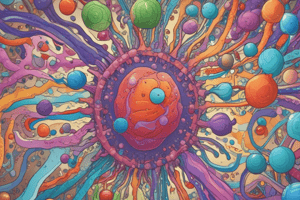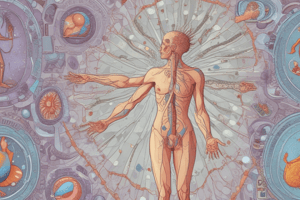Podcast
Questions and Answers
Microbes are coated by C4 and C3d.
Microbes are coated by C4 and C3d.
False (B)
B cells recognize microbes through BCRs and C3d via CR2.
B cells recognize microbes through BCRs and C3d via CR2.
True (A)
B cells do not have Toll-like receptors (TLRs).
B cells do not have Toll-like receptors (TLRs).
False (B)
Activated B cells enter cell cycle and proliferate, synthesizing more IgG and free IgG.
Activated B cells enter cell cycle and proliferate, synthesizing more IgG and free IgG.
Soluble protein antigens can cross-link and activate B cells strongly.
Soluble protein antigens can cross-link and activate B cells strongly.
Activated B cells move out of follicles and towards a compartment where Helper T-cells are absent.
Activated B cells move out of follicles and towards a compartment where Helper T-cells are absent.
Macrophages in subcapsular sinus can transfer antigens to B-cells in lymph nodes.
Macrophages in subcapsular sinus can transfer antigens to B-cells in lymph nodes.
Antigen-induced clustering of membrane Ig receptors triggers mechanical signals.
Antigen-induced clustering of membrane Ig receptors triggers mechanical signals.
IgM and IgD receptors have conserved immunoreceptor tyrosine-based activation motifs (ITAMS).
IgM and IgD receptors have conserved immunoreceptor tyrosine-based activation motifs (ITAMS).
Tyrosines in ITAMS are phosphorylated by SyK tyrosine kinase.
Tyrosines in ITAMS are phosphorylated by SyK tyrosine kinase.
The complement system provides signals for the inhibition of B lymphocytes.
The complement system provides signals for the inhibition of B lymphocytes.
B-cell receptor complex is formed by IgA and IgB along with other receptors.
B-cell receptor complex is formed by IgA and IgB along with other receptors.
Flashcards are hidden until you start studying




